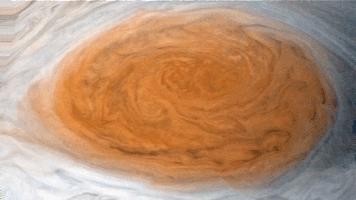Australian physicists seeking to unlock valuable future quantum technology

Credit: Pixabay
FLEET physicists from Monash University and the University of Queensland are finalists, named today, in the Australian Museum Eureka Prizes – the nation’s top science awards.
The Australian Quantum Vortex team provided the first proof of a 70-year-old theory of turbulence.
Turbulence is everywhere, but remains one of physics’ great unsolved problems.
Turbulence in two-dimensional flow, and the giant vortices that it causes, influence global weather, flight and even astronomical phenomena.
The Australian Quantum Vortex Team, with researchers from three Australian universities, developed pioneering laser technologies to observe the quantum origins of turbulence for the first time.
“We were able to verify 70-year-old predictions that large-scale vortices emerge from an apparent chaos of smaller vortices,” says FLEET’s Prof Matt Davis (University of Queensland).
“The study has important implications for non-equilibrium physics, and specifically studies of superfluids and superconductors,” says FLEET’s Prof Kris Helmerson (Monash University).
Their results will impact the design of future quantum technologies, such as ultra-energy efficient electronics being developed at FLEET.
Such quantum technologies were recently recognised by CSIRO as an emerging multi-billion dollar industry for Australia, potentially generating $4bn per year and creating 16,000 jobs.
WHY VORTICES, AND QUANTUM TURBULENCE
Most people are familiar with the concept of a vortex: whether the familiar twisting shape of a tornado, or the simple whirlpool that forms as a bathtub drains away through the plughole.
Vortices also occur in systems exhibiting 2D flow, where there is no vertical movement of the fluid, such as in thin layers of liquids, or as cyclones in atmospheric systems. In fact, 2D vortices cover a vast range of systems, from the superfluid movement of neutrons on the surface of neutron stars to the Atlantic Ocean Gulf Stream to the zero-resistance movement of electrons in high-temperature superconductors.
In the studies published last year, random distributions of vortices were seen to begin to order themselves, just as the 70-year old theory proposed by Onsager had described, and were shown to be stable.
Experimental verification used a phase of matter known as a Bose Einstein Condensate (BEC), which has been called the fifth state of matter. BECs are a quantum state existing at ultra-low temperatures, in which quantum effects become visible at a macroscopic scale.
Prof Wolfgang Ketterle, who was awarded the 2001 Nobel Prize in Physics for the first experimental demonstration of BECs, has praised the Australian study, saying “I wish I could have done these experiments. They are not just impactful, they are also elegant, and reveal the beauty of nature. It is a proud accomplishment for science in Australia”.
Turbulence, with its seemingly random and chaotic motion of the fluid, is a notoriously difficult problem, for which there is no general theoretical description. (In fact, the Clay Mathematics Institute offers a million dollar prize to anyone that comes up with a theory of turbulence.)
Improved understanding of turbulence could contribute to both reducing its negative effects (for example, in more energy-efficient air transport), and in harnessing its positive effects (for example in quantum technologies).
COLLABORATIVE STUDY EMPHASIZES AUSTRALIA’S QUANTUM STRENGTH
The Australian Quantum Vortex team was led by Prof Warwick Bowen (University of Queensland) and also includes researchers from Monash University and the Swinburne University of Technology.
As well as combining both theoretical and experimental studies, the study also represents a collaboration of two Australian Research Council Centres of Excellence: FLEET, and the ARC Centre of Excellence for Engineered Quantum Systems (EQUS).
The three key 2019 papers in the leading journal Science captured the discovery: the first time three Australian papers on one research topic have featured in Nature or Science in a single year.
- Giant vortex clusters in a two-dimensional quantum fluid (DOI: 10.1126/science.aat5718) University of Queensland
- Evolution of large-scale flow from turbulence in a two-dimensional superfluid (DOI: 10.1126/science.aat5793) Monash University
- Coherent vortex dynamics in a strongly-interacting superfluid on a silicon chip (DOI 10.1126/science.aaw9229) University of Queensland
This significant breakthrough attests to Australia’s strength in quantum physics, and was achieved due to a series of home-grown technological breakthroughs that greatly extend the state-of-the-art, allowing quantum matter discoveries in new regimes far from what has been possible previously.
The 2020 CSIRO quantum technology roadmap estimated that quantum technologies in Australia could generate $4bn per year and create 16,000 jobs.
EUREKA PRIZES
The Australian Museum Eureka Prizes are the country’s top science awards.
The awards honour excellence across the areas of research and innovation, leadership, science engagement and school science, and are presented annually in partnership with some of the country’s leading scientific institutions, government organisations, universities and corporations.
The Eureka Prize winners will be announced on Tuesday 24 November at Sydney Town Hall.
STUDYING NON-EQUILIBRIUM SYSTEMS AT FLEET
While the results specifically describe turbulence, a notoriously difficult problem to describe theoretically, they are more broadly relevant to non-equilibrium physics – the evolution of systems far from equilibrium, in particular, the development of coherent, large-scale flow from adding energy to a turbulent system.
For centuries scientists have developed an excellent understanding of systems in equilibrium. But what happens to a system driven far from equilibrium remains one of the great unknown challenges of modern material physics.
###
At FLEET, non- equilibrium systems are being used to pursue zero-resistance paths for electrical current.
FLEET is an Australian Research Council-funded research centre bringing together over a hundred Australian and international experts to develop a new generation of ultra-low energy electronics, motivated by the need to reduce the energy consumed by computing.
Media Contact
Errol Hunt
[email protected]
Original Source
http://www.




